11. The Fabric of Self
My title comes from the late 19th-century American writer Agnes Repplier: "It is in his pleasure that a man really lives;
it is from his leisure that he constructs the true fabric of self." What did 19th-century people do when they were not
working? Was it the same in both countries, for both genders, and all classes? What facilities were brought into being
to make this possible? And how did leisure activity reflect on everyday life?
We will start by looking at city life in London and New York, the shift of emphasis to cultivate shopping as a social outlet,
and the development and use of the public parks in both cities. We will then look at where people went for day trips and
holidays, and the development of seaside resorts.
The second hour is divided into two contrasting sections. On the one hand, outdoor sports and team games, and their
supposed benefits in building body and character. On the other, the indoor enjoyment of theater, vaudeville, popular music,
and dance. rb.
The script, videos, and images will be posted immediately after class.
TO THINK ABOUT
Two paintings from around 1900, both showing a scene in a large city park. Click the pictures to switch to larger versions.
Click QUESTIONS for suggestions of points to consider, then ANSWERS for a little more information.
Here are brief bios of the major artists considered in the class, listed in order of birth.
For this week only, they include quite a few who were not artists, but are still important to the story.
An alphabetical listing of artists for the whole course can be found at the
BIOS link on the syllabus page.
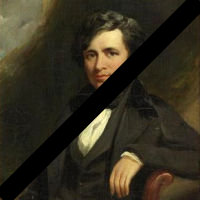 |
Sidney Shepherd, 1784–1862. English painter.
George "Sidney" Shepherd was an draughtsman and watercolorist, known mainly for his view of English towns. [The image is a placeholder only.]
|
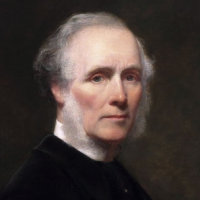 |
William Powell Frith, 1819–1909. English painter.
Frith began his career as a portrait painter (his subjects including Charles Dickens), but branched out to literary and genre subjects and the vast panoramas of contemporary life such as Derby Day and Railway Station that became his best-known legacy.
|
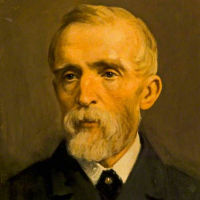 |
John Ritchie, 1821–75. English painter.
Ritchie's two paintings of crowd scenes in London parks made a good impression at the Royal Academy exhibition of 1858, but I can find out little more about the artist. [The image is probably not of the painter.]
|
 |
Frederick Law Olmsted, 1822–1903. American landscape architect.
With his partner Calvert Vaux, Olmsted won the competition in 1858 to develop Central Park in NYC, taking the natural features of the terrain and landscaping it to create the astonishing range of scenery that we know. Olmsted, who coined the term “landscape architect,” went on to design not merely parks in other cities, but connected park systems, feeling strongly that his work had a social purpose as well as a practical one.
|
 |
Charles Wynne Nicholls, 1831–1903. Irish painter.
Born and trained in Dublin, Nicholls moved to London in 1864, where he specialized in group genre scenes, but continued to exhibit in both cities.
|
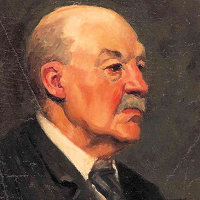 |
Winslow Homer, 1836–1910. American painter.
With JMW Whistler, one of the greatest American painters of his time, he too spent some years in Europe, but reacted with strongly designated areas of light and dark and almost heroic figures. He later retired in seclusion to the coast of Maine, painting the seascapes that were his favorite subject.
|
 |
Alfred Morgan, 1836–1924. English painter.
Several of Morgan's works in mural and mosaic are in the Victoria and Albert Museum, but apart from his painting of Prime Minister Gladstone riding a London omnibus, One of the People (1885), I can find out little more about hism.
|
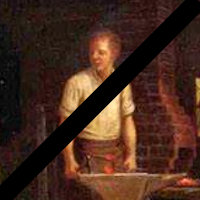 |
Samuel Carr, 1837–1908. American painter.
Carr trained in England then moved to the US in 1862, settling in Brooklyn. He specialized in genre scenes and landscape. [The image is by Carr, not of him.]
|
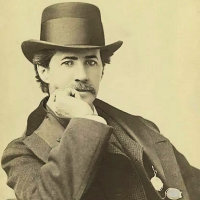 |
Augustin Daly, 1838–99. American playwright.
The author of the iconic melodrama Under the Gaslight (1867), Daly was also an impresario and stage director, exercising a strict control over his companies, running both in New York and London.
|
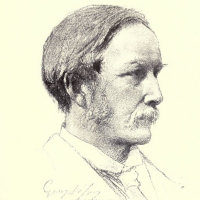 |
George William Joy, 1844–1925. Irish painter.
Though born in Dublin, Joy lived and worked in London. He specialized in historical scenes, including contemporary history—his Death of General Gordon, 1885 (1893) is his best-known work—but also did portraits and scenes of everyday life, such as The Bayswater Omnibus (1895).
|
 |
Ford Madox Brown, 1851–93. English painter.
Although he was never a formal member of the Pre-Raphaelite Brotherhood, Ford shared their belief that art should be true to nature and morally edifying. His best-known works are The Last of England (1855) and the large street scene Work (1863).
|
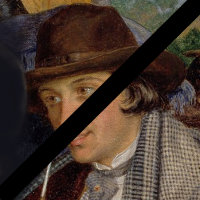 |
Charles Rossiter, 1852–90. English painter.
His large genre painting To Brighton and Back for 3/6d (1859, Birmingham) is a valuable record of the social life of its period, but very little is known of his life. [The image is a detail of the said painting, not a self-portrait.]
|
 |
Percy French, 1854–1920. Irish songwriter.
A poet, composer, and performer, French wrote numerous gently comical songs such as "Phil the Fluter's Ball" and "The Mountains o' Mourne" which have entered the Irish repertoire almost as though they were folksongs.
|
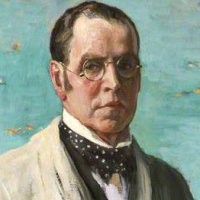 |
John Lavery, 1856–1941. Irish painter.
Lavery was born in Belfast and trained in Glasgow and Paris. He specialized in portraits and society genre pieces, but also painted some prominent occassions in the First World War, which earned him a knighthood (Sir John) in 1918.
|
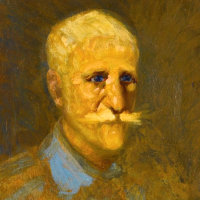 |
Maurice Prendergast, 1859–1924. American painter.
Born in Canada, Prendergast was a member of the group of artists aound Robert Henri, but developed a lighter, more colorful style than the others, influenced particularly by developments in France. At first, he painted mainly in watercolor, but later moved to oil painting and prints.
|
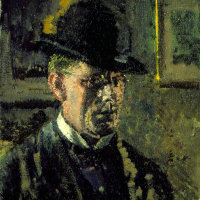 |
Walter Sickert, 1860–1942. English painter.
Sickert was born in Munich of a Danish-German father and an Anglo-Irish mother, who settled in London in 1868. Although his father and grandfather were both painters, Sickert started as an actor, touring with Henry Irving. But in 1881 he left the stage and studied painting with Whistler and Degas, developing a personal style of dark-toned realism that made him one of the most influential British artists at the turn of the century.
|
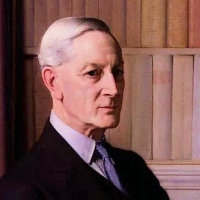 |
Henry Newbolt, 1862–1938. English writer and lawyer.
After studying at Clifton College and Oxford, Newbolt became a lawyer and practised as a barrister until 1899. He also worked for the government, producing the influential Newbolt Report on the teaching of English in 1921. He was knighted in 1915. He is best known, however, as the author of the once-popular patriotic poems "Vitai Lampada" and "Drake's Drum."
|
 |
Ernest Lawrence Thayer, 1863–1940. American writer.
Thayer was a Harvard-educated journalist and humorous writer whose enduring claim to fame is his 1888 ballad "Casey at the Bat," the best-known baseball poem ever written.
|
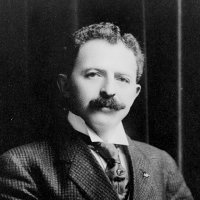 |
Charles K. Harris, 1867–1930. American songwriter.
Harris's 1892 song "After the Ball" became a runaway success. He ploughed his huge profits into setting up his own business as a Tin Pan Alley publisher, writing over 300 songs, but none achieving the same sentimental appeal.
|
 |
Scott Joplin, 1868–1917. American composer.
Though he began playing in the brothels of Saint Louis and Chicago, Joplin had already received a good musical education with the support of his mother. He made his name writing and performing piano rags, earning him the title "The King of Ragtime." His operas The Guest of Honor (now lost) and Treemonisha (1911) received little attention at the time, but the latter was revived to great acclaim in Houston in 1976.
|
 |
William Glackens, 1870–1938. American painter.
Beginning as a newspaper illustrator, Henri was encouraged by Robert Henri to take up painting, and became a central figure in the Ashcan School and in 1913 an organizer of the Armory Show. His subject matter was realist, but in style he was much influenced by French Impressionists such as Renoir.
|
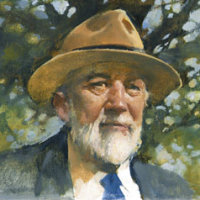 |
Charles Ives, 1874–1954. American composer.
The son of a musician, Ives got a job as an organist at 14 and studied music at Yale. Going into the insurance business (and founding his own successful company), he continued to play and began to compose—pieces which are among the most original of his time, exploring simultaneity, polytonality, and unusual scales.
|
 |
George Bellows, 1882–1925. American painter.
A leading member of the Ashcan School, and known for his scenes of city life and boxing, Bellows was a pupil and close associate of Robert Henri. At 27, he was the youngest artist ever to be elected to the National Academy of Design.
|













































































